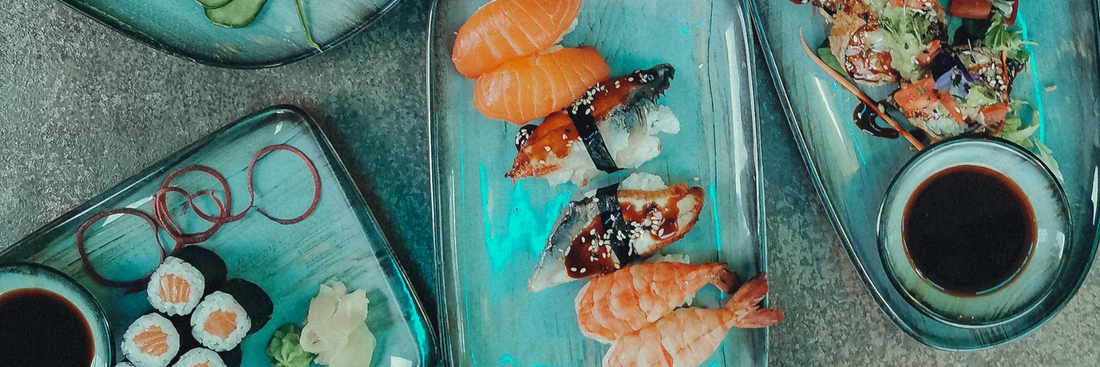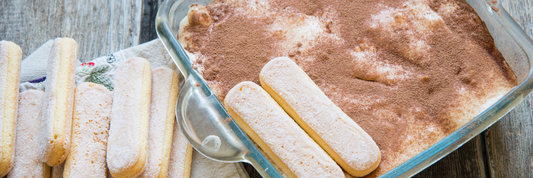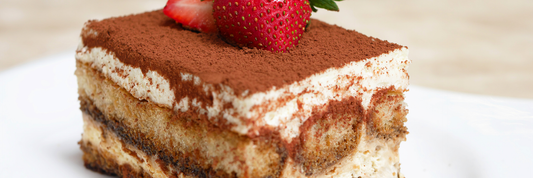Seafood continues to be one of the most compelling categories for cafés, restaurants and catering businesses. Among seafood offerings, salmon stands out for its flavor versatility, premium perception and suitability across multiple day-parts. Whether you’re crafting casual bowls, fine dining entrées or grab-and-go trays, a well-constructed salmon menu can deliver appeal, margin and menu differentiation.
In this comprehensive guide we’ll explore how to build a standout salmon menu ingredient selection, cooking techniques, trending preparations, presentation and packaging, with a strong focus on business-ready execution.
- 50+ Creative Coffee Menu Ideas for Small Cafés & F&B Startups
- 15 Creative Coffee Cocktails Recipes for Professional Bartenders
- 6 Delicious Swiss Cheese Recipes You Can’t Miss
Why a Dedicated Salmon Menu Matters

Premium perception & customer demand
Salmon is globally recognized as a quality protein. When placed on a menu with appealing descriptors and proper cooking, it signals premium value and freshness.
Versatility across menu formats
Salmon works for lunch bowls, dinner mains, catering trays, salads, slices for retail packs and more. This flexibility allows kitchens to leverage it across services.
Health & flavor trends
With its omega-3 profile and rich flavor, salmon aligns with both health-conscious consumers and flavor-driven diners.
Opportunity for margin control
While salmon can carry higher cost than chicken or pork, you can design portions, pairings and sides smartly to maintain profitability while offering perceived value.
Key Considerations When Designing Your Salmon Menu
Ingredient sourcing
- Choose quality cuts: skin-on fillets, center-cut portions or sustainable lines depending on your brand positioning.
- Consider origin: wild-caught vs farmed, regional versus imported, these details matter to customers.
Portion & pricing strategy
- Determine portion size based on target day-part (e.g., 5 oz for lunch, 7-8 oz for dinner).
- Price for perceived value: highlight premium features (e.g., “Pacific-caught salmon, citrus miso glaze”) to justify higher price points.
Cooking technique clarity
- Decide signature methods: pan-seared, cedar-plank grilled, miso-glazed, slow-roasted, sous-vide, or even cold-smoked for salads.
- Train kitchen accordingly so diners get consistent texture, doneness and flavor.
Complementary sides & sauces
- Use side dishes that enhance the salmon without overpowering it (e.g., quinoa & kale bowl, roasted root vegetables, citrus-herb potatoes).
- Offer standout sauces: miso-maple glaze, chili-lime butter, mustard-dill cream, soy-ginger vinaigrette. These add differentiation and upsell potential.
Salmon Menu Trends to Watch (2026 Edition)

Global flavor layering
Consumers expect more than “salmon with veggies.” Menu trends show increased demand for global flavor influences think miso-glazed salmon, Korean gochujang-maple salmon, Nordic dill-cured salmon, or Mediterranean herb-roasted salmon.
Bowls & casual dining formats
Salmon bowls (with grains, greens, sauces) are booming for lunch and fast-casual service. They cater to health-conscious diners while allowing premium pricing.
Shareable & catering formats
Salmon also works in formats for sharing plank presentations, large trays, carve-and-serve setups for events.
Sustainable and transparent sourcing
Sustainability continues to be a major consumer driver. Mention your sourcing practices (e.g., “responsibly farmed Atlantic salmon”, “wild-caught Alaskan sockeye”) to boost perceived value and brand credibility.
Packaging-friendly formats
For take-out or delivery, Salmon works well if built with packaging in mind: separate sauce compartments, well-ventilated insulated containers, and visually appealing presentation for social sharing.
Sample Salmon Menu Items for Your Food Business
Here are actionable menu ideas you can adapt:
Lunch & Bowls
- Honey-Mustard Glazed Salmon Quinoa Bowl: Sheet-roasted salmon with kale, quinoa, cherry tomato, avocado and Dijon-honey vinaigrette.
- Teriyaki Salmon Rice Bowl: Pan-seared salmon, steamed jasmine rice, scallions, sesame seeds and house teriyaki glaze.
- Salmon Nicoise-Style Salad: Medium-rare salmon on baby greens with baby potatoes, green beans, olives and lemon-dill dressing.
Dinner Entrées
- Miso-Maple Glazed Salmon Fillet: Served with wild rice pilaf and roasted Brussel sprouts, finished with sesame-ginger butter.
- Cedar-Plank Grilled Salmon: With citrus-herb butter and heirloom vegetable medley.
- Smoked & Cured Salmon Board: Slices of house-smoked salmon, dill-cream sauce, rye crisps, pickled cucumber and lemon wedges (perfect for sharing or pre-order events).
Catering & Grab-and-Go
- Salmon Fillet Platter for 8–10: Glazed salmon, roasted vegetables and baby potatoes, delivered in compostable tray with clear lid.
- Mini Salmon Sliders: Flaked salmon cakes with herb aioli, mini brioche buns, presented in eco-friendly containers for corporate events.
- Salmon Bento Pack: Portion of salmon, mixed greens, quinoa, sauce cup; ideal for retail grab-and-go counters.
Operational Tips for Executing Your Salmon Menu

Prep efficiently
- Pre-portion fillets for consistent cook times.
- Pre-assemble salads or bowls with chilled bases and add hot salmon last minute.
- Use sheet-pan roasting or high-volume settings (e.g., pastry combi ovens) to hit lunch rush.
Maintain texture & quality
- For salmon, aim internal temperature ~125-130°F (52-55°C) for medium; rest it for carry-over cooking.
- If grilled for char, finish in oven to ensure doneness.
- Ensure sauces and glazes don’t cause soggy packaging—offer sauce on side if for take-out.
Packaging & presentation
- Use attractive containers that highlight color and freshness. Clear lids or windows are great for visual impact.
- For sauces, provide sealed cups or compartments to preserve crisp textures.
- Label with origin, cooking style and pairing, this adds perceived value.
Upselling & add-ons
- Offer optional extras: “Add citrus-dill butter crust”, “swap side for wild rice & kale”, “upgrade to charred salmon skin crisp”.
- Bundle drinks or desserts aligned with seafood: e.g., Sauvignon Blanc, citrus-ginger mocktail, or a light sorbet.
Packaging & Sustainability Considerations
Serving salmon in takeaway or catering demands thoughtful packaging:
- Choose compostable containers to align with today’s eco-conscious diners.
- Use vent-able lids for hot mains to avoid steam buildup and sogginess.
- Present sauces separately if possible to preserve texture and presentation.
- Brand your packaging: prints like “Premium Salmon Fillet – Responsibly Sourced” elevate perception.
- Communicate sustainability: “Our salmon is Wild Alaskan Sockeye, delivered fresh weekly” or “Our packaging is 100% compostable”. This builds trust and justifies premium pricing.
Marketing & Menu Storytelling
The way you market your salmon items can significantly impact uptake:
- Use enticing descriptors: “Maple-glazed wild salmon”, “Charred cedar-plank salmon”, “Pan-seared Atlantic salmon with herb butter”.
- Highlight provenance and freshness: “Delivered fresh twice weekly”, “Norwegian-farmed, MSC-certified”.
- Leverage seasonal framing: e.g., “Salmon Harvest Bowl – available this autumn”, or “Summer Citrus Salmon Plate”.
- Feature visuals: high-quality photography matters, especially for social media bright salmon flesh, vibrant sides, clear containers for packaging.
- Use limited time offers (LTOs) to create urgency: “For next 3 weeks: Korean BBQ Salmon Bowl”.
FAQs – Designing & Selling a Salmon Menu

What portion size is best for main salmon entrée?
For dinner mains aim for 7–8 oz (200–230 g) fillet. For lunch bowls 4–5 oz works. Adjust sides accordingly.
How can I keep salmon moist when reheating or prepping ahead?
Avoid overcooking; rest fillets and reheat gently (e.g., at 275°F/135°C for 5–6 minutes). Use foil or covered trays to capture steam.
What sides pair best with salmon for cost control?
Use seasonal vegetables, grains (quinoa, wild rice), roasted potatoes or simple Asian-slawthese allow flavor while controlling cost.
Can salmon work well for take-out and delivery?
Yes, but packaging matters. Use vented lids and side sauce cups. Use clear or premium-look containers and consider insulating trays for longer transport.
How do I market salmon as a premium but not overly expensive item?
Highlight quality (+ “responsibly sourced”) and describe accompaniments in value terms. Pair with simpler sides to control cost but present as premium.
What are trending flavors for salmon in 2026?
Miso-maple glazes, Korean gochujang-honey, Mediterranean herb crusts, Nordic dill-lemon finishes, and bowls with global grains.
Conclusion
Launching or refreshing a salmon menu offers cafés, restaurants and food service businesses a powerful mix of appeal: it meets customer demand for premium seafood, supports versatile menu formats, and allows you to design dishes that deliver both flavor and profit.
By focusing on sourcing, cooking techniques, presentation, packaging and smart marketing not just the fish itself, you elevate your offering from “just another fish dish” to a standout menu component that drives traffic and builds brand value.
Ready to enhance your packaging and presentation for premium salmon dishes? Explore our range of eco-friendly food containers that support both aesthetic appeal and sustainability.







